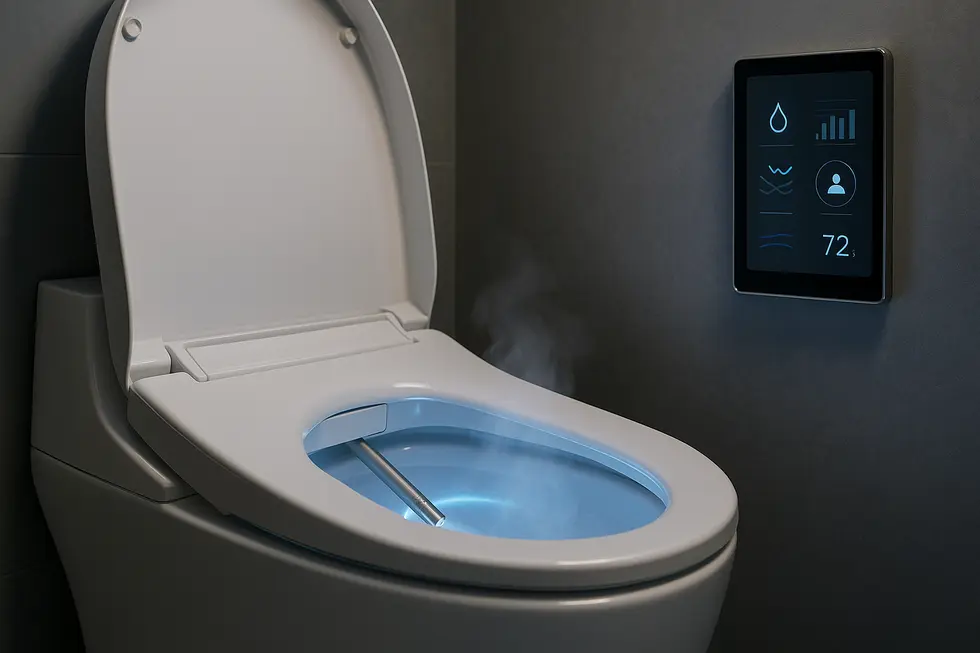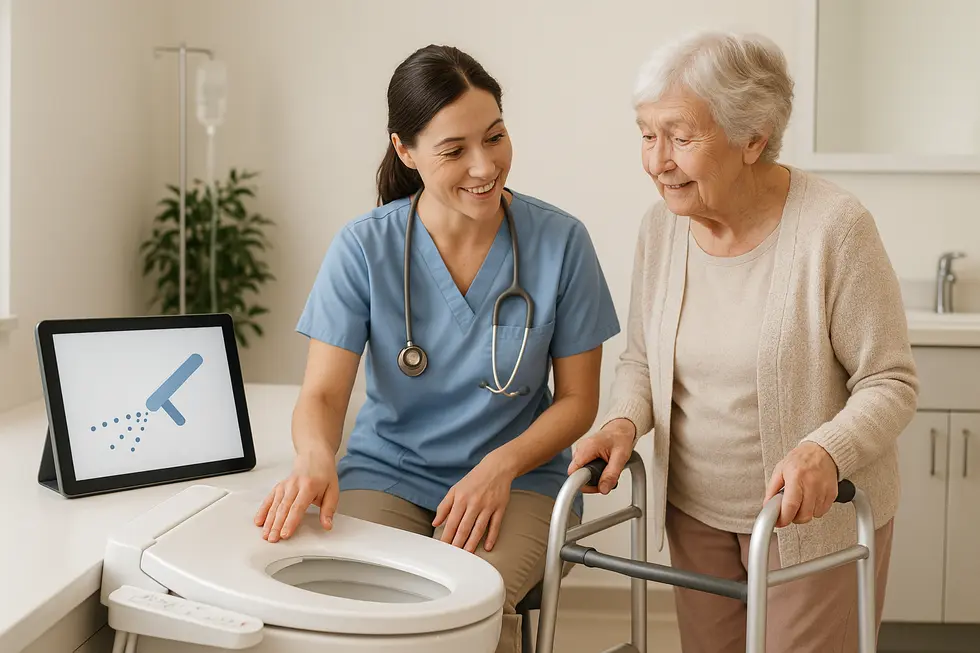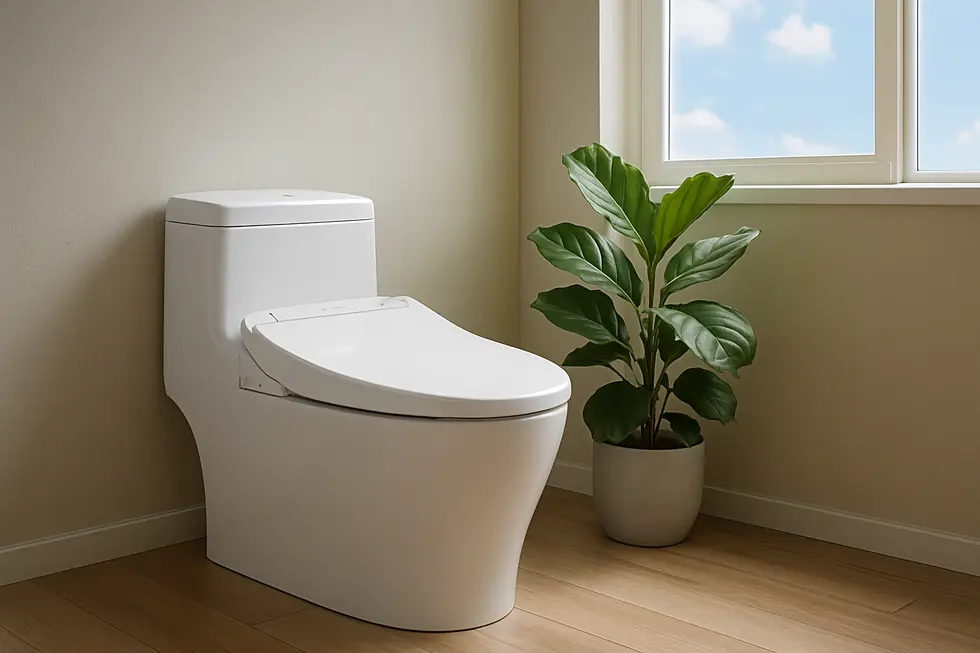Bidet Attachment, Bidet Seat, Handheld Bidet, Portable Bidet
Beyond Toilet Paper: The Modern Case for Bidet Hygiene Benefits
Bidet hygiene benefits have helped bidets quietly evolve from a niche bathroom luxury to an integral tool for cleaner, greener, and healthier living. Driven by sensor-rich technology, growing environmental awareness, and mounting clinical data, water-based cleansing now speaks to everyone—from eco-minded families and busy professionals to seniors and people with limited mobility. The following chapters explore this shift through three lenses: the innovations that make bidets so effective, the broader societal payoffs of replacing paper with water, and the medical reasoning behind recommending bidets for healthier skin and reduced infection risk. Together they form a holistic view of why opting for a quick wash can change more than just your routine.
Smarter Streams: How Modern Bidet Technology Elevates Everyday Hygiene

Few household fixtures have evolved as rapidly—or as quietly—as the humble bidet. What started as a simple porcelain basin has transformed into an electronic hygiene hub that rivals any other smart-home device. The heart of this evolution is precision water control. Micro-processors now regulate pressure and temperature down to the degree, delivering a tailored rinse that removes bacteria more reliably than dry wiping while safeguarding sensitive skin from abrasive friction.
Comfort, however, is only half the story. Automation reduces hand contact with contaminated surfaces, an advantage felt keenly in shared bathrooms and by users with limited mobility. Self-cleaning stainless-steel nozzles flush themselves before and after every use; some models even deploy UV light to neutralize lingering microbes. By delegating these tasks to the seat itself, modern bidets close hygiene gaps that toilet paper can’t address.
Connectivity amplifies these benefits. Bluetooth and Wi-Fi enable voice commands or smartphone presets, so each family member can store preferred settings without fumbling for side panels. Timed nozzle rinses, filter-change alerts, and usage analytics nudge users toward consistent sanitary habits, turning good hygiene into an effortless routine. For older adults or anyone recovering from surgery, remote controls mean independence rather than reliance on a caregiver’s assistance.
Sustainability is woven throughout this technological leap. Targeted spray patterns use just fractions of a gallon—far less than the 37 gallons of water embedded in a single roll of paper. When multiplied across a household, reduced demand for pulp, packaging, and transport shrinks both carbon footprints and monthly budgets. Many users discover additional savings by enabling the integrated warm-air dryer and ditching tissue altogether, a shift endorsed by physicians concerned about chemical residues on wipes.
Consumer enthusiasm mirrors these gains. Analysts predict the global market for advanced seats will more than double within the decade as health-conscious homeowners prioritize bathroom upgrades. Anyone curious about the broader, long-term payoffs can explore the far-reaching benefits of upgraded bidet toilets for a deeper dive into hygiene science and practical adoption tips.
External reference: https://www.openpr.com/news/4057468/bidet-seat-market-booming-worldwide-with-smart-homes
From Forests to Faucets: How Bidet Hygiene Protects Health and Planet

Cutting a tree, bleaching its fibers, wrapping the pulp in plastic, trucking it across continents, and finally flushing the scraps—this is the hidden lifecycle behind every roll of toilet paper. Switching to a bidet interrupts that chain of waste. A single household that trades paper for water can spare roughly 250 rolls a year, saving about 15 kg of wood and more than 140 l of water used during pulp production. While a bidet spray does consume water, its average 0.5 l per use is negligible compared to the thousands of liters embedded in tissue manufacture.
Beyond resource savings, water cleansing limits chemical exposure. Many tissues contain fragrances, formaldehyde, or chlorine residues that irritate delicate perianal skin. Washing with clean water avoids these additives, helping reduce dermatitis flare-ups and hemorrhoid inflammation. The societal payoff is lower demand for medicated wipes, which often clog municipal systems and burden wastewater plants.
Communities also gain through better public-health resilience. Water jets physically dislodge bacteria rather than smear them, shrinking the transfer of pathogens from hand to surface in shared restrooms. When vulnerable groups—postpartum mothers, elders, people living with ALS—use a bidet, they regain autonomy, decreasing caregiver intervention and potential cross-infection. This inclusive hygiene mirrors broader pushes for universal design in homes and workplaces.
The economic argument is equally persuasive. A midrange attachment pays for itself in saved tissue within a year, then continues to trim household budgets. For renters or travelers, portable models extend these perks outside the home while nurturing greener habits. Practical guides on adopting such eco-friendly bidet habits outline simple, low-cost ways to start benefitting today (https://pegabidet.com/2025/06/02/eco-friendly-portable-bidet-guide/).
Finally, consider the climate ledger. Pulp and paper mills rank among the top industrial greenhouse emitters. Lower demand frees forests to sequester carbon and preserves biodiversity threatened by logging. When paired with renewable electricity, an electric bidet’s footprint can approach net-zero, demonstrating that personal comfort need not clash with planetary stewardship.
In short, every rinse replaces disposable fiber with a renewable flow, advancing hygiene, dignity, and environmental balance in one quiet bathroom ritual. External analysis of cost and environmental impact
From Clinic to Bathroom: How Bidets Elevate Everyday Hygiene and Health

Medical professionals increasingly view bidet use as more than a luxury; they consider it a practical intervention for infection control. Water removes residual fecal bacteria instead of merely smearing it, reducing the microbial load that can migrate to the urethra or nearby skin folds. Less hand contact with waste also lowers the chance of cross-contamination—an advantage applauded in shared or hospital bathrooms where pathogens spread quickly. Many clinicians now recommend bidets for patients after gastrointestinal procedures, a stance echoed in reports on what doctors say about bidets.
Skin health is another focus. Dry paper can create micro-abrasions, leaving tiny openings for bacteria and fostering conditions such as dermatitis or chronic itching. A gentle, adjustable water spray avoids that friction, making daily cleansing kinder to inflamed hemorrhoids, postpartum sutures, or sensitive pediatric skin. Warm water also stimulates local circulation, which may aid healing around irritated tissue. Because bidets rinse away chemical residues found in many wipes, dermatologists note fewer flare-ups among patients with eczema or allergic reactions.
Urologists highlight a related benefit: fewer urinary tract infections, especially in people susceptible to recurrent episodes. Effective rinsing prevents bacterial migration toward the urethra, while an integrated air-dry feature limits the moist environment in which microbes thrive. Similarly, gynecologists find that controlled front-to-back washing helps maintain a balanced vulvovaginal microbiome without harsh soaps.
Bidets become even more transformative when mobility is limited. Individuals living with amyotrophic lateral sclerosis (ALS) or arthritis often struggle to twist, reach, and wipe. A motorized seat with remote-controlled nozzles restores privacy and dignity, sparing joints from painful motion and reducing caregiver workload. By ensuring thorough cleansing every time, these devices also cut the risk of pressure-related skin infections common in wheelchair users. Further reading on adaptive features for neurological conditions can be found at this detailed overview (https://www.manybidets.com/blog/bidets-adaptive-equipment-for-als/).
Final thoughts
Smart engineering, eco-logic, and clinical insight converge on a single truth: water cleansing outperforms paper in cleanliness, sustainability, and health. By adopting a bidet, you join a global movement toward safer, kinder, and more responsible hygiene—one refreshing rinse at a time.
Experience a new standard of clean with PEGABidet—designed for comfort, safety, and independence. Join thousands who trust us to make personal care simple and dignified. Contact us at contact@pegabidet.com
About us
PEGABidet is a brand owned by L.A NEXTGEN LLC, based in California. We design intuitive, hygienic, and accessible bathroom solutions that prioritize safety, dignity, and independence. Our mission is to make personal care effortless and empowering for people at every stage of life.

